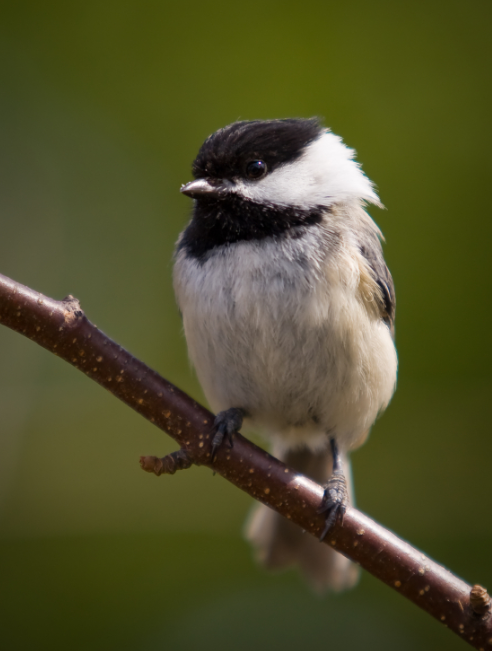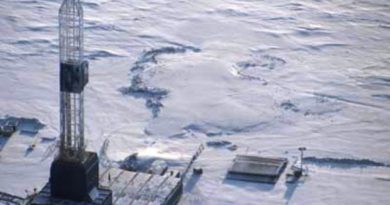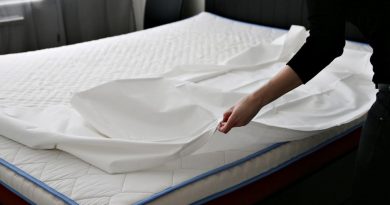Chemical contaminants suspect in mystery of Alaska chickadee beak deformities

When black-capped chickadees and some other birds in the Anchorage area began turning up in the late 1990s with elongated, weirdly curved or twisted beaks, biologists and bird lovers began to worry.
The deformities range from slight to gross and can have severe consequences for the birds if they are unable to use their beaks to pick up food or groom feathers so their bodies retain heat.
“People, a lot of times when they first see them, think the bird is carrying a twig in its beak,” said Colleen Handel, a U.S. Geological Survey biologist who has devoted several years to studying the problem.
The tiny black-capped chickadees are the most afflicted, with 7 percent of Alaska adults developing deformed beaks. The deformities are also showing up in other birds, including ravens and crows, though not as frequently, Handel said.
Now the beak-deformity outbreak has spread north to Fairbanks, south to the Puget Sound region and — for an unknown reason — across the globe to Great Britain, where it is showing up among starlings, tits and other species, Handel said.
“It looks like it might be a global problem and not strictly located in Alaska,” she said.
Causes unknown
Scientists still do not know the cause. But new research by Handel and Caroline Van Hemert, another USGS biologist, suggests that environmental contaminants — specifically, organochloride compounds — might be linked to the deformities. It’s a broad category of contaminants that includes pesticides like DDT and related chemical formulas, PCBs, chemical compounds used in fire retardants and numerous substances that are no longer used or targeted for phase-out under the Stockholm Convention on Persistent Organic Pollutants.
The new research is detailed in a study published in the journal Environmental Toxicology and Chemistry.
Handel and Van Hemert analyzed data collected over several years. They and fellow scientists took blood samples from the chickadees in Anchorage. They tested unhatched eggs left behind in nest boxes after the parents and newborn chicks had departed. They tested tissues of several euthanized birds.
They found that several organochloride compounds were “ubiquitous in chickadee tissues at all life stages,” in the words of their study, but that levels were very low.
Two specific contaminants — heptachlor epoxide and PCB-123 — were significantly associated with the birds that had beak deformities, but they have not been known in the past to be linked to such deformities. Aside from those results, nothing obvious about contaminant levels jumped out, but there was one key difference between deformed-beak birds and normal birds: The birds with deformed beaks had higher incidences of chromosomal damage of a type associated with toxic substances introduced into the environment.
But if contaminants are the problem, what is their source? Even though Southcentral Alaska is the most densely populated and developed region, it is still not heavily industrialized, Handel notes.
“There’s no smoking gun in this study, which is frustrating,” she said.
Pollution and contaminants
Possible contaminant sources might be old wastes from the area’s military bases and training sites, pesticides used to combat the region’s spruce-bark beetle infestation or compounds to quell wildfires, her study said. Also possibly involved is far-away pollution that is transported in global atmospheric currents to the cold north, Handel said.
Some possible causes of the beak deformities appear to be ruled out, or on the verge of being ruled out.
The problem is not something encountered in southern wintering grounds because black-capped chickadees and the other affected birds are year-round residents. “So whatever is happening to these guys is happening in Alaska,” Handel said.
It is not something in the sunflower seeds that are shipped up from the Lower 48 and placed by local bird lovers in outdoor feeders. The new study considered the possibility that commercial birdseed holds dangerous levels of contaminants, but tested samples did not back up that theory.
It is not selenium from agricultural drainage, which was identified as the cause of beak deformities suffered by birds in the 1980s in California’s San Joaquin Valley.
It is not the collection of contaminants that birds ingested in the Great Lakes region in the 1970s and 1980s, when beak deformities were among a suite of physical impairments showing up in the region’s birds. Those problems were blamed on various types of industrial pollution, including PCBs and hydrocarbon contaminants. Birds with deformed beaks included terns, herons and cormorants — birds that acquired environmental contaminants from the fish they ate and then passed on those contaminants to the eggs they laid.
In the California and Great Lakes cases, chicks with deformed beaks were emerging from their eggs. That is not the case in Alaska, where the only birds with the deformed beaks are adults, Handel said.
“It seems to be something that’s happening to them as adults, and not when they’re in the egg,” she said.
The search for a cause of the beak deformities continues. There is likely to be a more precise examination of the possible role of contaminants, and even viruses are being studied as a possible cause, Handel said.
The USGS Alaska Science Center has a program dedicated to studying the deformities and is taking reports from the public about sightings of affected birds.
Related stories from around the North:
Canada: Fighting to protect bird habitat in North America’s boreal forest (SLIDESHOW), Eye on the Arctic
Finland: New measures to protect the Saimaa seal in Finland, Yle News
Iceland: Endangered whale meat shipped from Iceland via Halifax, The Canadian Press
Norway: Rapid growth in Svalbard walrus population, Barents Observer
Sweden: Sweden’s mountain hares changing fur color too early, Radio Sweden
United States: Scientists seek cause of patchy baldness in some Beaufort Sea polar bears, Alaska Dispatch



